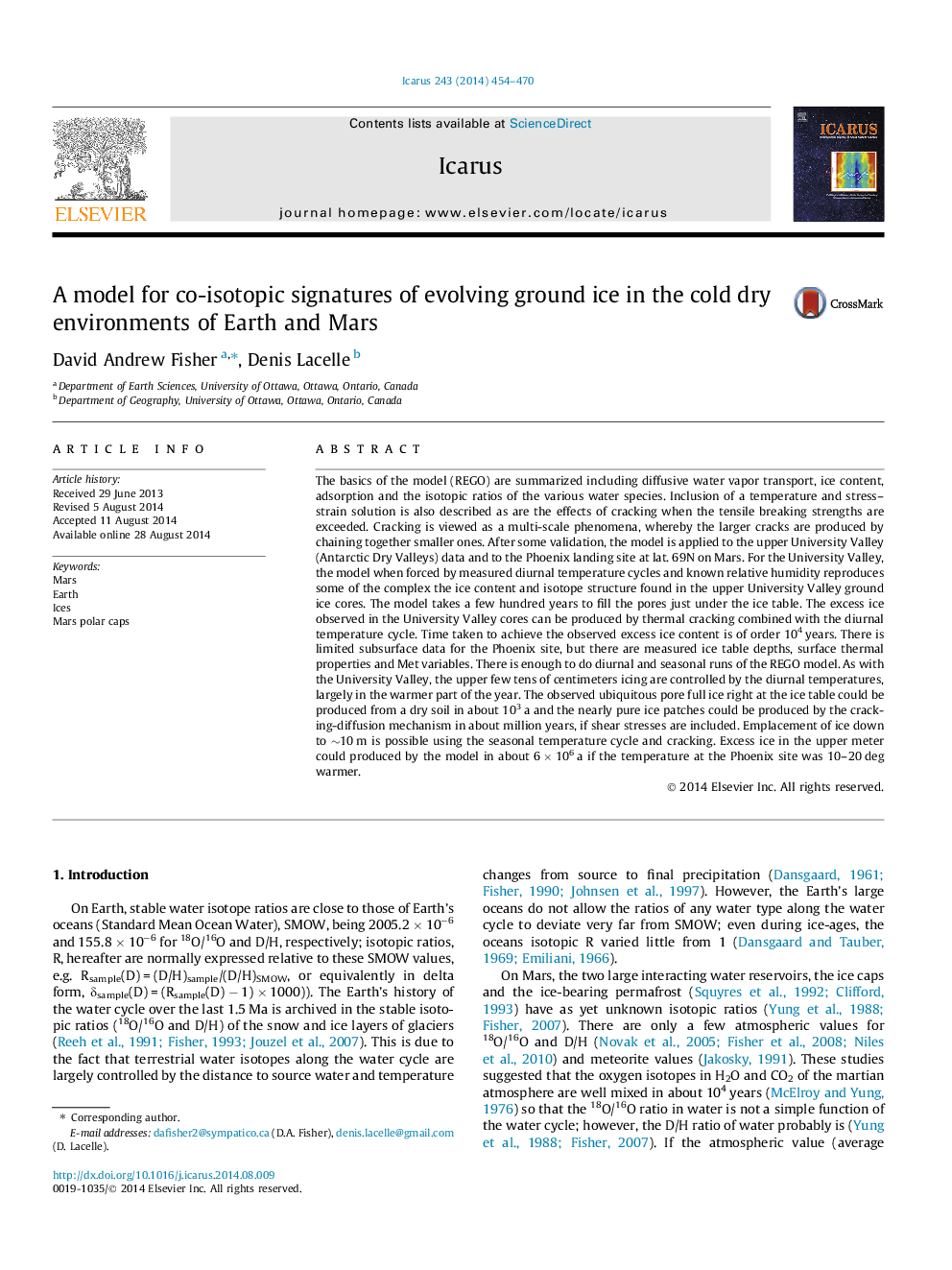| Article ID | Journal | Published Year | Pages | File Type |
|---|---|---|---|---|
| 1773111 | Icarus | 2014 | 17 Pages |
•A diffusive water vapor transport model (REGO) with ice content, isotopic ratios and cracking is described.•REGO applied to University Valley (UV Antarctica) and to Phoenix landing site on Mars.•REGO simulates UV isotopes, takes ∼300 years to fill pores at ice table and 104 years for excess ice.•At the Phoenix, and UV sites, the upper 40 cm icing is controlled by the diurnal temperature.•Pore-full Phoenix ice produced in 103 a and pure ice patches in 2 myr. REGO predicts D/H.
The basics of the model (REGO) are summarized including diffusive water vapor transport, ice content, adsorption and the isotopic ratios of the various water species. Inclusion of a temperature and stress–strain solution is also described as are the effects of cracking when the tensile breaking strengths are exceeded. Cracking is viewed as a multi-scale phenomena, whereby the larger cracks are produced by chaining together smaller ones. After some validation, the model is applied to the upper University Valley (Antarctic Dry Valleys) data and to the Phoenix landing site at lat. 69N on Mars. For the University Valley, the model when forced by measured diurnal temperature cycles and known relative humidity reproduces some of the complex the ice content and isotope structure found in the upper University Valley ground ice cores. The model takes a few hundred years to fill the pores just under the ice table. The excess ice observed in the University Valley cores can be produced by thermal cracking combined with the diurnal temperature cycle. Time taken to achieve the observed excess ice content is of order 104 years. There is limited subsurface data for the Phoenix site, but there are measured ice table depths, surface thermal properties and Met variables. There is enough to do diurnal and seasonal runs of the REGO model. As with the University Valley, the upper few tens of centimeters icing are controlled by the diurnal temperatures, largely in the warmer part of the year. The observed ubiquitous pore full ice right at the ice table could be produced from a dry soil in about 103 a and the nearly pure ice patches could be produced by the cracking-diffusion mechanism in about million years, if shear stresses are included. Emplacement of ice down to ∼10 m is possible using the seasonal temperature cycle and cracking. Excess ice in the upper meter could produced by the model in about 6 × 106 a if the temperature at the Phoenix site was 10–20 deg warmer.
